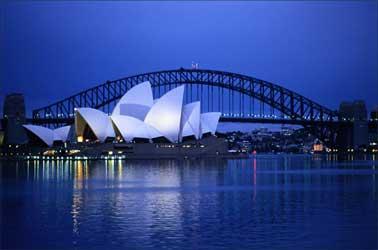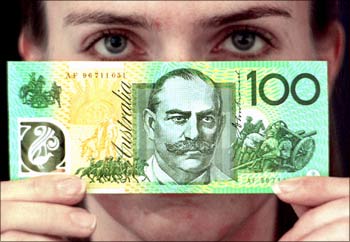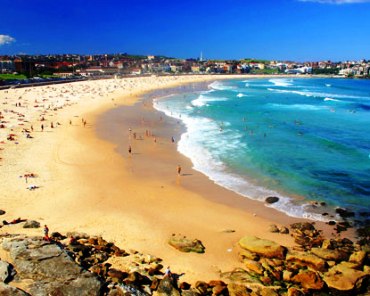Neena Bhandari in Sydney
Australia is luring high-spending Indian visitors to triple its tourism revenue from AU$820 million to AU$2.3 billion by 2020.
Australia's image as a welcoming country suffered a setback following attacks on Indian students in Melbourne and Sydney, and subsequently tourist arrivals declined by six per cent to 17,565 in 2010.
. . .
Australia bets on Indians to triple tourism revenue
Image: City of Melbourne.However, Tourism Australia is now determined to bring back Indian tourists to its shores.
Tourism Australia's 2020 India Strategic Plan launched today at the annual Australian Tourism Directions Conference in Canberra aims to triple the growth of inbound Indian travellers, including students, from around 145,000 to 400,000 in the next 10 years.
"It is time to have a stronger look at India.
"The growing wealth of the Indian middle class, not just in Delhi and Mumbai, but throughout second-tier cities, means travel is one of those things that young Indians want to put on their life's resume and Australia is part of that in terms of being an appealing destination," Tourism Australia managing director Andrew McEvoy told Business Standard.
. . .
Australia bets on Indians to triple tourism revenue
Mr McEvoy said Indian tourists should go beyond popular destinations such as Sydney, Melbourne and the Gold Coast.
"There are opportunities around independent self-drive holidays, wine tours and luxury holidays, adventure tourism all perfectly suited for Australia.
"It is a good time to do some brand building in India.About 18 months ago, we launched the Namaste campaign and we have used an MTV Bollywood couple, who had their honeymoon in Australia, as the front people of our advertising. We want to continue using advocacy, telling the Australian story through the eyes of well-known Indians. We think that is a great way to talk to the Indian audience."
. . .
Australia bets on Indians to triple tourism revenue
Image: Perth, Australia.The key points of the 10-year India strategy include brand building, particularly through the use of digital and social media and access to direct non-stop flights to Australia.
At present, most flights are routed through the Asian hubs, including Singapore, Kuala Lumpur, Hong Kong and Bangkok.
The Australian Tourism industry is getting ready to welcome Indian visitors.
"It is about understanding and giving this young upwardly mobile consumer, who is looking for great cosmopolitan cities and also a bit of adventure, a good experience, vegetarian and western food, service and culture," said McEvoy.
. . .Australia bets on Indians to triple tourism revenue
Image: A kangaroo.Indian travellers prefer standard (3/4-star) and luxury (5-star) hotels for their holiday accommodation and their average length of stay has been 63 nights.
The most common purpose of visit from India was to meet friends and relatives.
Business arrivals are also up 23 per cent from the previous year.
Research shows Indians are among the top spenders on food and shopping.
In 2010, India was Australia's 11th largest inbound market with 138,700 arrivals, spending AU$0.826 billion, a seven per cent increase compared to the previous year.
Tourism contributes AU$72 billion per annum (5.6 per cent of the gross domestic product) and 876,000 direct or indirect tourism jobs to the Australian economy.
. . .
Australia bets on Indians to triple tourism revenue
Image: The Bondi Beach.In 2010, Australia's share of India's total outbound travel was only 1.1 per cent. The Australian dollar, reaching the highest levels since the currency was floated in 1983, has posed a challenge too.
The Tourism Forecasting Committee Forecast Issue 2 (November 2010) estimates that arrivals from India will increase by 8.4 per cent in 2011 and by 10.5 per cent in 2012.
In 2010, 165,600 Australians travelled to India, up 11.5 per cent compared to 2009.
"In the first half of 2011, there has been a 16 per cent growth, with 84,700 Australians visiting India between January and July. We are expecting about 15 to 20 per cent growth in the second half of this year," said Amar Singh, assistant director, India Tourism.








article